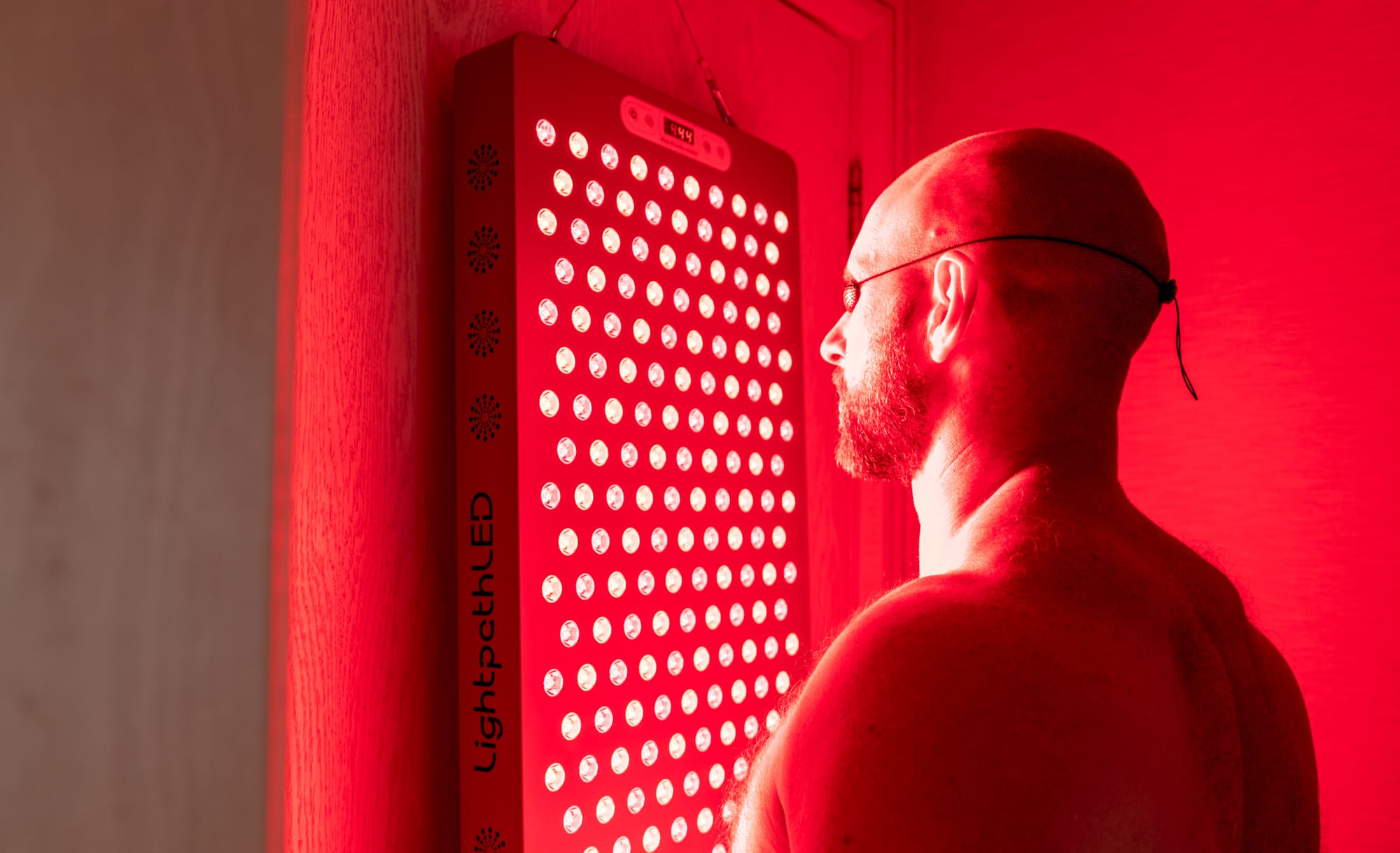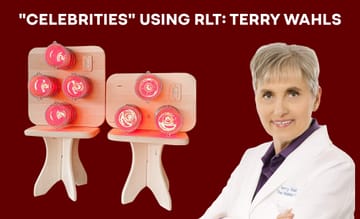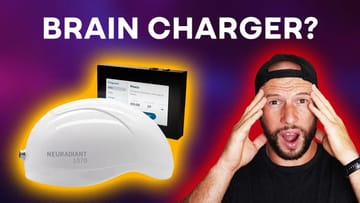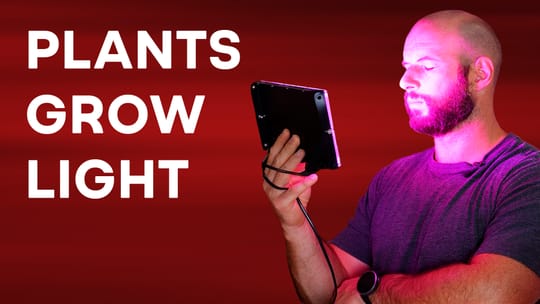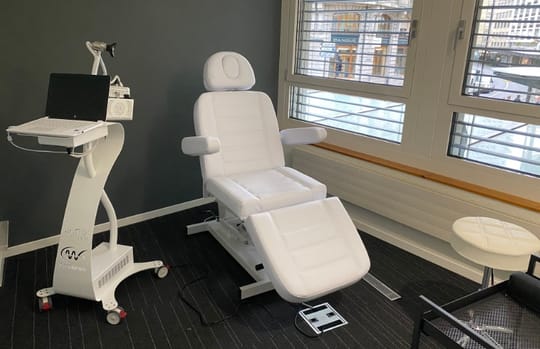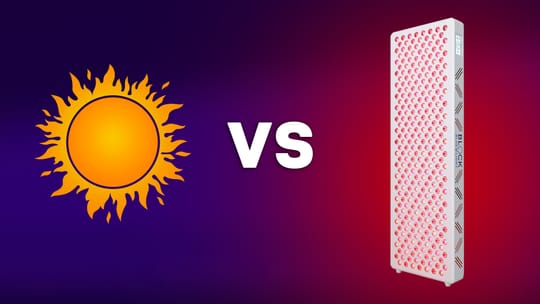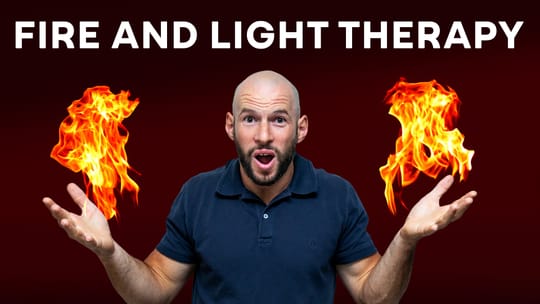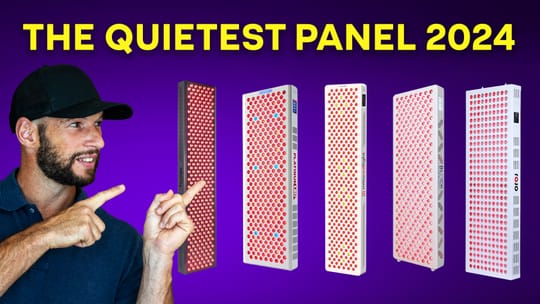In this blog post, I'll talk about red light therapy distance from the. So in other words, how far away should you be from a red light therapy device when you're using it.
Here at Light Therapy Insiders we get this question a lot, actually. And there's no simple answer as much depends on the:
- Device
- How powerful the device is in terms of the quantity of light that comes out of it (irradiance)
- Your goals with the treatment
- Other exposures in your life from light (including sunlight).
So there's no easy answer here. I can't tell you that "3 inches is how close to red light therapy to stand".
In the past, I've written about this topic in the blog about red light therapy at home. Here I will dive much deeper into this topic.
First Things First: What’s Your Goal With Red Light Therapy?
So at a very basic level, what matters most is what your goal is with red light therapy. For convenience sake, I'll only restrict myself to red light therapy - not green light therapy, because calculations there are different.
I'll start with the topic of red light therapy dosage in mind. There are two main tissues you can treat in terms of dosage (1; 2; 3; 4; 5; 6; 7; 8; 9; 10; 11):
- Superficial tissues
- Deep tissues
For superficial tissues, you'll need a low dosage. I'll soon tell you what that means. With a low dosage, sufficient light has entered superficial tissues such as peripheral blood vessels or the skin so that these tissues have become saturated.
If you want a higher dose, more light needs to enter your body. But, light penetration goes down the deeper the light enters your body. This means that once you have the correct dose for deeper tissues, you've got a dose that's too high for superficial tissues.
So if you want a superficial tissue treatment, you can't do a deep tissue treatment (because not enough light has entered). And if you want a deep tissue treatment (muscles, organs, bones, etc), you can't do a superficial treatment.
The process is like boiling an egg. You can't cook the egg yolk without cooking the egg white too. And, once the yolk has received enough heating so that it's no longer raw, the yolk has far surpassed that point.
Next up, let's consider another factor:
Why Distance Matters When You Do Red Light Therapy
So how to use red light therapy in terms of distance? Here too, there's a lot of science on this topic.
We'll have to take different factors into account here. If you stand further away from a device, the dosage reaching your skin will be lower. If you stand closer, the dosage will be higher.
(For convenience's sake, I'm assuming we are talking about red light therapy panels and handheld devices here, as you cannot change the distance with many other products. For instance, with a wrap or a mask, the distance cannot be changed).
You may ask: "How close to red light for red light therapy to work?" There's no universally valid answer here, but there's a lot of incorrect marketing.
For instance, you see people doing yoga 6 feet away from a panel. Barely any light reaches your body from such a long distance. So distance matters because otherwise, the therapy won't work. There's probably a threshold level of light that needs to reach your skin for you to get a benefit.
Also, if you stand away much further, treatment will take longer. Less light reaches your body, it takes more time to reach the optimal dosage for either a superficial or deep tissue treatment.
The Optimal Distance From Skin While Doing Red Light Therapy
Next up, how close to red light therapy devices should you sit or stand? Here there's no universal answer. Anything from a device that's placed directly on the skin to 32 inches will work.
The problem with placing many devices directly on the skin is that you'll often get EMF exposure. "EMF" stands for "Electro-Magnetic Fields" and your main exposure source is electric devices of the modern world.
For instance, a recent review study on this topic states that:
"Concomitant with the ever-expanding use of electrical appliances and mobile communication systems, public and occupational exposure to electromagnetic fields (EMF) in the extremely-low-frequency and radiofrequency range has become a widely debated environmental risk factor for health. Radiofrequency (RF) EMF and extremely-low-frequency (ELF) MF have been classified as possibly carcinogenic to humans (Group 2B) by the International Agency for Research on Cancer (IARC). The production of reactive oxygen species (ROS), potentially leading to cellular or systemic oxidative stress, was frequently found to be influenced by EMF exposure in animals and cells" (12).
(You can find low-EMF devices in our shopping tool as well)
Scientists don't agree on whether EMFs are harmful to health. But, I do think there's very convincing evidence to believe they are harmful (13; 14; 15; 16; 17).
If you don't agree with me, however, then don't worry. But for most people, a device that's not used too closely is best. Usually, that's a 6-inch distance.
Next up, there's the factor of heat. Some online gurus think that you should avoid all heat when exposing yourself to red light therapy. I don't agree there and think red light therapy works just fine, even with some heat.
Then, you'll have to determine what you're going to treat - the superficial or deeper tissues I talked about before.
If you treat superficial tissues, use a dose of up to 10 Joules (J) per centimeter squared. For deep tissues, the maximum dose is 70 J/cm2.
What’s The Best Scientifically-Supported Distance For Doing Red Light Therapy?
There is no universally valid distance for best red light therapy treatments. Having said that, let's consider a few examples of what dosage you can expect at different distances.
My good friend Alex Fergus did a few YouTube videos on this topic. I'll break these videos down below:
First up, the video above shows that to get good red light therapy effects, you'll have to be directly in front of the panel. Even at the outside edges of the panel, exposure already drops off to 25% of the maximum.
At 12 inches with a Red Light Rising Advantage 1500 panel, for instance, you receive a 50 mW/cm2 in the center. Just outside the panel that exposure has dropped off to 25 mW/cm2. And a bit further out exposure drops by another half.
Now, with a setup that has multiple red light therapy panels the outcome will be totally different. You can see that effect in the following video below:
With a huge four-panel setup, you'll receive decent power output across the entire body. The caveat here is that all parts of the body need to be directly in front of the LEDs, somehow.
With this setup, you'll get decent power output at longer distances. For instance, in the center of the setup, you'll get 40 mW/cm2 even at 24 inches. And at the outsides of the setup, that power is half. At 12 inches, moreover, the power is even higher across the board.
Of course, there are tons of different tools as well. For instance, a wrap product such as the Kineon Move+ Pro is meant to be placed directly on the body. But if you put it a bit farther away to your body, it still works. But, that product unlikely works well at 12 or 24 inches.
Then on the other end, you've got the Chroma Ironforge:
That Ironforge is meant to be used very close to the body, but not for a long time. So you're moving it around during your sessions.
Also, I will say that even though I referenced quite a few articles earlier on in this blog post, science isn't 100% sure yet about the best distance. And it's unlikely that there is one correct distance.
What Happens If You Sit Too Close When Doing Red Light Therapy?
Well, as explained before, if you're sitting really close to a panel or other device when doing red light therapy, there are two main risks:
- Overdosing - because the power output is much higher when a panel is close to the skin. When you use devices away from the body, the risk of overdosing is lower because your overall exposure is lower.
- Excess EMF exposure - I covered this earlier but won't go into too much detail. Basically, the closer you get, the higher your magnetic and electric field exposure will be. Getting extremely close can still be a benefit though if you're not EMF sensitive and don't have a big red light setup. In that case, using a device close to the skin will lead to much quicker treatment times.
And, with red light therapy overdosing, you'll get some side effects such as being tired. Otherwise, you're good to go!
Key Variables To Consider: Panel Size, Power Output, Therapy Length and Timing
In this section, I'll return to the topic of different devices out there and how to use them.
Ideally, most people want full-body treatments. And in such a case, you can get a huge panel setup such as Alex Fergus uses in the video below:
With such a setup, you can imagine you don't need to worry about the optimal distance to the panel anymore. Instead, you can stand 12 inches away or even 24 inches and have great exposure. And, at 3 or 6 inches, you'll simply have a far quicker treatment time.
However, with other devices such as tabletop panels or if you have one panel, you'll have to decide on a distance. Ideally, with such products, closer is often better because treatment times go down.
Conclusion: It's Complicated But Here Are The Guidelines
There's no universally perfect ideal distance from the skin for red light therapy products. But, for most products, three inches will do fine and six inches too.
If you want full control over your dosing, use the power output in mW/cm2 for calculating a dose in Joules /cm. Multiply the power output by the seconds you use a product and then divide by 1,000 to make that calculation. Then, use our shopping tool to find the power output of many different products on the market.
This is a post by Bart Wolbers. Bart finished degrees in Physical Therapy (B), Philosophy (BA and MA), Philosophy of Science and Technology (MS - with distinction), and Clinical Health Science (MS), has had training in functional medicine, and is currently chief science writer at Lighttherapyinsiders.com

